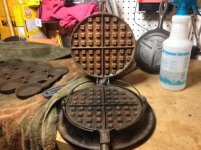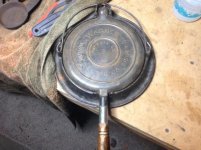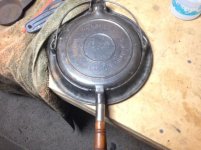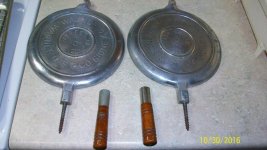Hello everyone,
This is the first waffle iron I have ever seen, I couldn't resist, and it was pretty cheap as well. I was wondering if I could get some info on when it was made? I also had a few seasoning questions/use questions.
1) What do I do with the wooden handles, they are not coming off.
2) How can I season this baby with them on?
3) Can I use this on my electric stove? It has the coils.
That is all I can think of now but I hope your responses spark more. I cannot wait to make waffles!!!
This is the first waffle iron I have ever seen, I couldn't resist, and it was pretty cheap as well. I was wondering if I could get some info on when it was made? I also had a few seasoning questions/use questions.
1) What do I do with the wooden handles, they are not coming off.
2) How can I season this baby with them on?
3) Can I use this on my electric stove? It has the coils.
That is all I can think of now but I hope your responses spark more. I cannot wait to make waffles!!!




